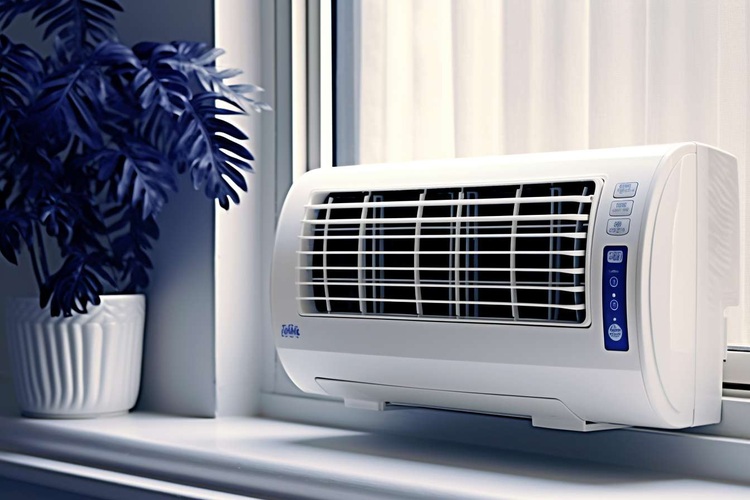Why Portable Air Conditioner Systems Are Changing Home Comfort
Portable air conditioners are revolutionizing the way we think about home cooling. These versatile units offer a flexible and efficient solution to temperature control, making them increasingly popular among homeowners and renters alike. As technology advances, portable AC systems are becoming more powerful, energy-efficient, and user-friendly, addressing many of the limitations of traditional cooling methods. This article explores why portable air conditioners are making waves in the world of home comfort and how they're adapting to meet the evolving needs of modern living spaces.

How do portable air conditioners work?
Portable air conditioners operate on a simple principle: they draw in warm air from the room, cool it using a refrigerant, and then expel the cooled air back into the space. The unit’s compressor circulates the refrigerant through coils, which absorb heat from the indoor air. This process not only cools the air but also removes excess moisture, helping to dehumidify the room. The warm air and collected moisture are then vented outside through an exhaust hose, typically connected to a window or a specially designed vent.
What are the key benefits of portable AC systems?
One of the primary advantages of portable air conditioners is their mobility. Unlike central air systems or window units, these devices can be easily moved from room to room, allowing users to cool specific areas as needed. This flexibility is particularly beneficial for those living in apartments or homes where permanent installation isn’t possible or desired. Additionally, portable ACs are generally easier to set up and require minimal installation, making them an attractive option for renters or those looking for a quick cooling solution.
Are portable air conditioners energy-efficient?
Modern portable air conditioners are designed with energy efficiency in mind. Many models come with programmable timers, sleep modes, and adjustable fan speeds, allowing users to optimize their energy consumption. Some advanced units even feature smart technology, enabling remote control via smartphone apps and integration with home automation systems. This level of control helps users maintain comfort while minimizing energy waste, potentially leading to lower electricity bills compared to running a central air system for an entire home.
How do quiet air conditioners enhance the user experience?
One of the most significant improvements in portable AC technology has been the development of quieter models. Manufacturers have focused on reducing noise levels, addressing a common complaint about earlier portable units. Today’s quiet air conditioners utilize advanced fan designs, improved insulation, and noise-reduction technologies to operate at much lower decibel levels. This enhancement allows users to enjoy a cool environment without the disruptive background noise often associated with air conditioning systems, making them ideal for bedrooms, home offices, or any space where silence is valued.
What unique features are changing the portable AC landscape?
Portable air conditioners are now incorporating innovative features that cater to diverse user needs. Some models offer dual functionality as both coolers and heaters, providing year-round climate control. Others include air purification systems with HEPA filters, addressing air quality concerns in addition to temperature regulation. There’s also a growing trend towards eco-friendly refrigerants and energy-saving modes that align with environmental consciousness. These advancements are expanding the role of portable ACs beyond simple cooling devices, transforming them into comprehensive climate management solutions.
How do portable air conditioners compare in terms of cost and efficiency?
When considering a portable air conditioner, it’s essential to weigh the costs against the benefits. While the upfront price of a portable unit may be higher than a window AC, the flexibility and potential energy savings can offset this initial investment over time. To provide a clearer picture, let’s compare some popular portable AC models:
| Model | Cooling Capacity (BTU) | Coverage Area (sq ft) | Energy Efficiency Ratio (EER) | Estimated Price Range |
|---|---|---|---|---|
| Whynter ARC-14S | 14,000 | 500 | 11.2 | $400 - $550 |
| LG LP1419IVSM | 14,000 | 500 | 10.0 | $600 - $750 |
| Honeywell HL14CESWK | 14,000 | 550 | 11.0 | $500 - $650 |
| Black+Decker BPACT14WT | 14,000 | 350 | 8.8 | $350 - $500 |
| SereneLife SLPAC10 | 10,000 | 300 | 9.0 | $300 - $450 |
Prices, rates, or cost estimates mentioned in this article are based on the latest available information but may change over time. Independent research is advised before making financial decisions.
The efficiency and cost-effectiveness of portable air conditioners depend on factors such as room size, insulation, and usage patterns. While they may not be as efficient as central air systems for cooling large spaces, portable ACs offer targeted cooling that can be more economical for smaller areas or intermittent use. Their ability to cool specific zones without affecting the entire home can lead to significant energy savings, especially in households where not all rooms require constant cooling.
In conclusion, portable air conditioner systems are transforming home comfort by offering flexibility, efficiency, and innovative features that cater to modern lifestyles. As technology continues to advance, these units are becoming increasingly capable of providing personalized climate control solutions. From their mobility and ease of use to their improved energy efficiency and quieter operation, portable ACs are adapting to meet the diverse needs of consumers. Whether as a primary cooling solution or a supplement to existing systems, portable air conditioners are proving to be a valuable tool in the quest for optimal home comfort.




